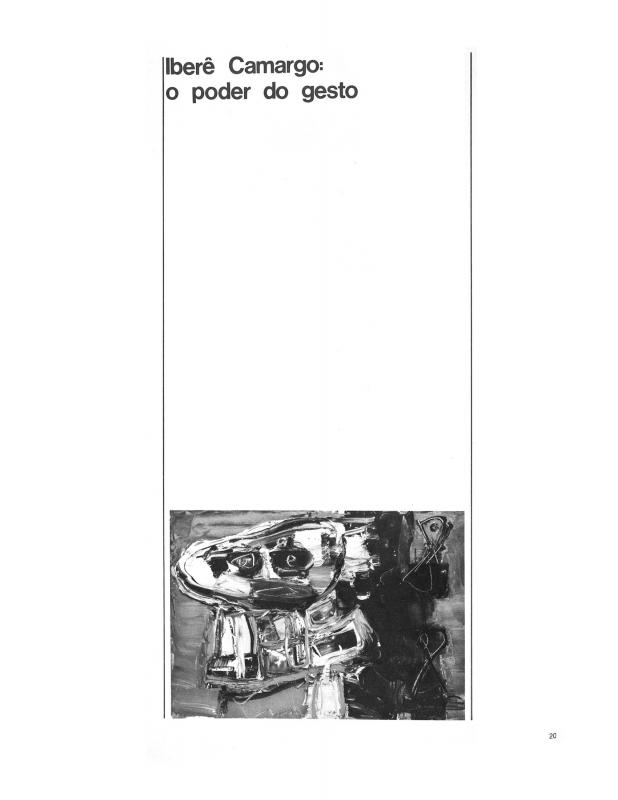This essay by Ronaldo Brito (b. 1951) describes the contributions made by Brazilian artists to abstract art. It was originally published in the catalogue for the exhibition Iberê Camargo: mestre moderno—curated by the author in 1994 and presented at the Centro Cultural do Banco do Brasil—as an outline of the retrospective show of works by this artist from Rio Grande do Sul. Brito reviews Camargo’s work, from the landscapes he produced in the early 1940s to the Ciclistas series he painted in the 1990s. The artist turned eighty in 1994, the year of the exhibition. He was honored by the Bienal de São Paulo in a special room beside the works of the Italian-Argentinean Lucio Fontana, Robert Rauschenberg, and Richard Long. He did not, however, consider it an honor to have his paintings placed next to “installations,” with all their attendant associations. In a statement given to the Jornal do Brasil (Rio de Janeiro, July 17, 1994), Camargo rejected any association with installations and paradoxically identified himself as a painter who produced abstractions “even though they are figurative.”
Artist and professor Iberê Camargo (1914–1994) joined forces with Alberto da Veiga Guignard to start the Grupo Guignard in the 1940s. In 1953, Camargo taught a course on printmaking at the Insituto de Belas Artes in Rio de Janeiro. Later on he moved out of his studio to an open-air workshop (Atelier livre, 1961) that in the course of time became a noted art school in Porto Alegre that surpassed the city’s overall academic standards. His professional career was acknowledged in an important interview in 1972 [see ICAA digital archive, doc. no. 1110416].
The art critic Ronaldo [Correia de] Brito (b. 1951) is one of the most important and influential art critics in Brazil. His essays have been published in books, magazines, and exhibition catalogues. He also writes for the newspaper Opinião and was one of the founders of the magazines Malasartes and Gávea. In the 1970s, he was one of the main instigators of the initiative to re-examine the Neo-Concrete art movement and its legacy to contemporary Brazilian art.

